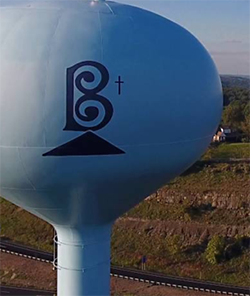Rivers In Northeast United States

The Northeast United States is home to a diverse range of rivers, each with its unique characteristics, ecosystems, and cultural significance. Stretching from the Canadian border to the Atlantic coast, this region encompasses parts of New England, the Mid-Atlantic, and the states of New York and Pennsylvania. The rivers in this area have played crucial roles in shaping the landscape, supporting biodiversity, and influencing human settlement and economic development.
One of the most iconic rivers in the Northeast is the Hudson River, which flows through New York State and into the Atlantic Ocean. With a length of approximately 315 miles (507 kilometers), the Hudson River is not only a vital transportation route but also a significant habitat for various fish species, including the endangered shortnose sturgeon. The river’s history is intertwined with the development of the United States, serving as a major route for trade and immigration. Today, efforts are underway to restore and protect the Hudson River’s ecosystem, which has faced challenges from pollution and climate change.
Key Points
- The Northeast United States is home to over 20 major rivers, each with unique ecological and cultural significance.
- The Hudson River is one of the most iconic rivers in the region, stretching 315 miles from its source to the Atlantic Ocean.
- Rivers in the Northeast support a wide range of biodiversity, including endangered species like the shortnose sturgeon.
- Human activities such as agriculture, industry, and urbanization have impacted river ecosystems, necessitating conservation and restoration efforts.
- Climate change poses significant challenges to river management, including altered flow patterns, increased flooding, and changes in water temperature.
Another significant river in the Northeast is the Connecticut River, which forms the border between New Hampshire and Vermont before flowing through Massachusetts and into Connecticut. At 406 miles (653 kilometers) long, it is the longest river in New England and supports a rich array of aquatic life. The Connecticut River has been vital for agriculture, with its fertile valley being one of the most productive farming regions in the country. However, the river has faced environmental challenges, including pollution from agricultural runoff and the effects of dams on natural flow patterns.
River Ecosystems and Biodiversity

The rivers of the Northeast United States are crucial for maintaining regional biodiversity. These waterways provide habitats for numerous fish species, such as salmon, trout, and bass, as well as supporting aquatic plants and animals that depend on the rivers’ unique conditions. The Delaware River, which forms the border between Pennsylvania, New Jersey, and New York, is recognized for its exceptional water quality and diverse fish populations. Efforts to protect and restore these ecosystems are essential, given the impacts of human activities such as deforestation, pollution, and the introduction of invasive species.
Challenges Facing Rivers in the Northeast
Rivers in the Northeast face numerous challenges, including climate change, which alters flow patterns, increases the risk of flooding, and changes water temperatures. These changes can have devastating effects on aquatic ecosystems, disrupting the natural cycles of plants and animals. For instance, warmer waters can lead to the decline of cold-water fish species, such as trout, while increased flooding can damage habitats and infrastructure. Additionally, human activities like agriculture and urban development contribute to pollution, further threatening the health of these ecosystems.| River Name | Length (miles) | States |
|---|---|---|
| Hudson River | 315 | New York |
| Connecticut River | 406 | New Hampshire, Vermont, Massachusetts, Connecticut |
| Delaware River | 330 | Pennsylvania, New Jersey, New York |
| Susquehanna River | 444 | New York, Pennsylvania, Maryland |

In conclusion, the rivers of the Northeast United States are not only natural wonders but also play critical roles in the region’s ecosystem and economy. Their conservation and management are essential for maintaining biodiversity, supporting human well-being, and ensuring the long-term health of these vital waterways.
What is the longest river in the Northeast United States?
+The longest river in the Northeast United States is the Connecticut River, stretching approximately 406 miles from its source to its mouth.
How do human activities impact rivers in the Northeast?
+Human activities such as agriculture, urbanization, and industry can significantly impact rivers, leading to pollution, altered flow patterns, and damage to habitats. These impacts can have long-term effects on aquatic ecosystems and biodiversity.
What role does climate change play in river management in the Northeast?
+Climate change poses significant challenges to river management, including altered flow patterns, increased risk of flooding, and changes in water temperature. These changes can disrupt ecosystems, impact biodiversity, and require adaptive management strategies.
Meta Description: Explore the diverse rivers of the Northeast United States, their ecological significance, and the challenges they face due to human activities and climate change. Discover the importance of conservation and management for these vital waterways.



